Taking Charge of Organizational Conflict
$18.95
David Cowan
Exploring the role of conflict in organizations, this book helps leaders, staff, and the entire organization come to grips with all types of conflict. If a school constitutes an organization, the students as well as the adults in that organization will inevitably find themselves in conflict. Thinking of schools in this way makes more sense than dividing the school organization into adults and children. Conflict is discussed as a necessary result of human interaction, and the key purpose of this program is to assist everyone in effectively, proactively, and productively managing and taking advantage of these inevitable conflict situations.
A self-contained training curriculum around which an entire organizational conflict management program can be built, this book is designed for use as a guide to harnessing and taking advantage of the enormous energy associated with conflict, and is loaded with activities designed to reinforce and build on the understandings developed and to provide plenty of opportunity to practice what has been learned. Activities can be used to facilitate formal training with individuals, in small and large groups, the classroom, or for personal use.
Everything you’ll find in Taking Charge is designed to facilitate working with individuals or in an entire staff development effort. The activities are as useful for kids as they are for adults.
Table of Contents
APPROACHES TO CONFRONTATION — QUICK REFERENCE
CONFLICT MANAGEMENT STRATEGIES — QUICK REFERENCE
INTRODUCTION
- About Taking Charge of Organizational
- Conflict Civility and Getting Along
- Deadly Assumptions
- People Drive Everything
- Mechanics of Conflict Management
- The Possibilities of Conflict
THE SOURCES OF CONFLICT
DYNAMICS OF CONFLICT
- Unmanaged Conflict Equals Destructive Consequences
- From Disagreement to Crisis
- Win-Lose and Lose-Lose
- Managed Conflict Equals Positive Change and Personal Growth
- The Win-Win Outcome
- Connecting Conflict to Productivity
- Better Conflict Management Means Resource Conservation
- Consequences of Personal and Professional Conflict
- The Evolution of Conflict
- The Impact of Crisis
THE NATURE OF CONFLICT
- Diversity and Conflict
- Comfort Zones and Conflict
- Conflict and Stress
- Mindworks, Stress, and Conflict
- Action versus Reaction
- The Gateway Skill
DIALOGUE HOLDS THE KEY
- A Medium for Dialogue
- Increasing Awareness
- Achieving Mastery
- Listening — The Master Skill
- Listening Is Situational
- Barriers to Listening
- Listening Out Loud
- Conflict Connection
MANAGING CONFRONTATIONS
- First Aid Fast
- First Aid for Intrapersonal Conflict
- Special Confrontations
- Handling Difficult People
CONFLICT STRATEGIES
THE ART & SCIENCE OF MEDIATION
- In The Middle
- How To Mediate a Conflict
- Mechanics of Mediation
- Benefits of Conflict Mediation
IMPORTANT PROCESSES
- Group Work Circles
- Comprehensive Feedback Model
Introduction
Just What Business Are You In?
Most people involved in organizational leadership have a pretty good grasp of the fact that the incidence of conflict is increasing or, at least, that conflict often gets in the way of getting things done.
Conflict includes everything from simple disagreements to outright violence. Moreover, it goes far beyond the interpersonal conflicts in which we and the people around us tend to become involved. It also includes those countless mental and emotional struggles that we deal with at a personal level.
Like interpersonal conflicts, internal, or intrapersonal, conflicts also vary in degree and mostly have to do with decisions and distress. Take a moment and consider the process of coming to a decision. At its simplest, it’s merely choice-making. But choices range from easy ones, like what toeat for lunch, to absorbing ones, like who in an organization is going to be reassigned or laid off when budgets are cut.
It seems reasonable to conclude that whenever a business spends a significant portion of its resources in a particular pursuit, that pursuit is part of what the organization is in business to do.
Together, internal and interpersonal conflicts consume so much time and attention that some organizations start to look as though conflict is their primary business.
Are you investing so much time and energy in conflict in your life or your organization that it’s starting to look as though you are in the conflict business?
My experience in dealing with all kinds of organizations; big and small, public and private, and for profit and nonprofit, leads me to believe that, more and more, organizations are in the conflict business — not by choice, but certainly to the detriment of almost everything else they are trying to accomplish.
More good intentions, well-conceived programs, personal and organizational vitality, and potentially productive careers lie dead on the road because of poorly managed conflict and its potentially hideous consequences than due to any other ill facing organizations today.
This being the case, it appears that in the management of conflict a wonderful opportunity exists to enhance effectiveness and productivity while deepening commitment to the human side of the organization.
Examine your own organization and ask yourself if you don’t agree that, based on what you see, you are more in the conflict business than you previously thought. If the answer is yes, this book is for you.
ABOUT THIS BOOK
Taking Charge of Organizational Conflict is written to help you come to grips with all kinds of conflicts. A popular myth says that if your department or business is experiencing conflict, it’s because management isn’t doing its job. But, if you and the people around you are engaged in any activity at all, at some point you are going to become involved in conflict. It’s normal and it’s going to happen. The key to your success in these situations is to effectively and productively manage and take advantage of conflict. The overriding purpose of this book is to help you forge and use such a key.
Achieving an understanding of the conditions that tend to generate conflict as well as the effects or dynamics of conflict is vital. When these understandings are grounded in theory, you are better prepared to comprehend what goes on in a conflict situation and better able to take charge. The book is organized to provide these insights and then to build a solid base for managing and taking command of situations ranging from simple confrontations to crises.
CIVILITY AND GETTING ALONG
What does it take for people to get along? What is required for individuals and groups from diverse backgrounds to willingly seek common ground while maintaining respect for the things they bring to the places they share?
Looking at the configurations of people in organizations, we find microcosms of our multicultural society — a society made up almost exclusively of immigrants and the descendents of immigrants or those who, for whatever other reasons, now find themselves part of this amazing diversity. For whatever reasons and by whatever circumstances we have come to a particular organization, we must develop a set of ethics and skills that enable us to appreciate and then take advantage of the wonderful kaleidoscope of colors and cultures we have inherited.
We can start by recognizing that any organization possesses dynamics of civility similar to those of the society as a whole. One difference is that maintaining civility and getting along are far more easily accomplished on this smaller scale. Getting along does not mean the absence of conflict, but rather implies our ability to manage conflict in ways that produce higher levels of harmony and productivity.
Merely admonishing people to be “good citizens” is not enough. Everyone is familiar with this label and can parrot all of its implied expectations. For individuals to get along in the spirit of true interdependence, they have to develop selfawareness; undertake responsibility for their actions; accept and appreciate differences in others; listen with empathy and understanding; communicate their thoughts and feelings accurately and assertively; include others in their activities; be open to divergent styles and points of view; work together to solve problems and complete projects; and peacefully resolve the myriads of conflicts they encounter and experience along the way.
To do all this is no small undertaking, but neither is it as daunting a task as it may seem. It does require effort directed at creating necessary awarenesses and understandings, and then it demands focus by the organization and all its people.
What this book offers is an information base and a set of structures designed to equip you with the only additional resources you need to redirect a major portion of the time, energy, and other resources currently being squandered on knee-jerk reactions and other inappropriate and ineffective responses to conflict.
Taking Charge of Organizational Conflict is not the complete answer, but it is a great place to start. If you marry what you find here with almost any degree of appropriate effort, the payoffs will be enormous.
DEADLY ASSUMPTIONS
As we prepare people to be successful in the workplace, we tend to think primarily about the skills they must possess in order to accomplish a particular job. We get people ready by giving them tools they need to be successful and to contribute. However, we very often assume that people are better able and more willing to perform than they really are.
In today’s organizations, it is not enough to have job-related skills. It has become vitally important for people to acquire the skills necessary to successfully interact with others and to positively influence organizational culture. Too often we assume employees already possess these skills when, in fact, they don’t. As we screen people for positions, we have many ways of objectively assessing job-specific skills. When we find that an individual is deficient in a certain area, we either provide training or we select a better qualified candidate. In assessing interpersonal skills, we rely almost exclusively on subjective judgement. Hardly ever do we assess or even consider a person’s ability to manage conflict.
We assume that, along the way, people have adequately developed the skills necessary to resolve disputes and settle arguments. In the case of most people, nothing could be farther from the truth.
Given its importance to personal and organizational well being, the issue of conflict management should never be carelessly dismissed. Taking for granted that the average person can manage conflict, even passably, involves assumptions that individuals and organizations can no longer afford to make.
PEOPLE DRIVE EVERYTHING
We often speak of the successes or failures of organizations, but fail to remember that organizations are only structures into which we place people to produce outcomes. Any success or failure we assign to an organization is only the reflection of the success or failures of its people. People drive everything in an organization, including conflict. Understanding that it is both unwise and unsafe to assume that people are adequately prepared to deal with conflict, we must heed the counsel of Henry Ford, who said, “Before everything else, getting ready is the secret to success.”
Taking Charge of Organizational Conflict is about getting ready. It is a guide to creating awareness concerning the skills that individuals and organizations must have in order to effectively manage confrontations and resolve conflicts.
MECHANICS OF CONFLICT MANAGEMENT
Conflict is the natural process by which we mediate all of our differences. The mechanics involved in managing conflict are the tools that we use to turn a perfectly natural event (a conflict) into a positive and growth-producing outcome.
The difference between a well-managed and a poorly-managed conflict is a function of how we respond — of whether we act or react to the conflict, and of what skills and strategies we employ in the process.
The ultimate purpose of Taking Charge of Organizational Conflict is to help the reader see conflict situations for what they are and bring to bear appropriate responses. Achieving this outcome depends to a great extent on our willingness to master the mechanics of managing conflict as they are presented in the following sections.
A word of advice: Don’t wait to practice the management of conflict until you find yourself or your organization in a challenging conflict situation. Consider the metaphor of a live theater production: A cast and a director work together to create an event that will please and entertain the audience and will cause everyone involved to feel proud. When you buy tickets to this play, you see the final product. You probably give little thought to the enormous effort that went into its creation — all the rehearsals, staging, costuming, etc. All the practice and preparation combine to produce an outstanding performance. Likewise, for conflict productions to have outstanding results requires enormous effort directed at practice and preparation. Don’t wait until the curtain rises to begin your preparations — get ready now.
THE POSSIBILITIES OF CONFLICT
When resources are scarce, most organizations attempt to generate new avenues for securing them. When this is not possible, organizations look inward and try to conserve, as well as to increase levels of productivity from existing resources.
When we examine the negative results of poorly managed or unmanaged conflict, we see resources squandered on unproductive if not counterproductive activities. On the other hand, when conflict is well managed and dealt with effectively, we not only conserve resources, we produce them. Well-managed organizational conflict could prove to be your number one wellspring of resource generation and one of your most powerful management tools.
Grade 4 – Adult, 182 pages, 6 x 9, paperback
Description
David Cowan
Exploring the role of conflict in organizations, this book helps leaders, staff, and the entire organization come to grips with all types of conflict. If a school constitutes an organization, the students as well as the adults in that organization will inevitably find themselves in conflict. Thinking of schools in this way makes more sense than dividing the school organization into adults and children. Conflict is discussed as a necessary result of human interaction, and the key purpose of this program is to assist everyone in effectively, proactively, and productively managing and taking advantage of these inevitable conflict situations.
A self-contained training curriculum around which an entire organizational conflict management program can be built, this book is designed for use as a guide to harnessing and taking advantage of the enormous energy associated with conflict, and is loaded with activities designed to reinforce and build on the understandings developed and to provide plenty of opportunity to practice what has been learned. Activities can be used to facilitate formal training with individuals, in small and large groups, the classroom, or for personal use.
Everything you’ll find in Taking Charge is designed to facilitate working with individuals or in an entire staff development effort. The activities are as useful for kids as they are for adults.
Table of Contents
APPROACHES TO CONFRONTATION — QUICK REFERENCE
CONFLICT MANAGEMENT STRATEGIES — QUICK REFERENCE
INTRODUCTION
- About Taking Charge of Organizational
- Conflict Civility and Getting Along
- Deadly Assumptions
- People Drive Everything
- Mechanics of Conflict Management
- The Possibilities of Conflict
THE SOURCES OF CONFLICT
DYNAMICS OF CONFLICT
- Unmanaged Conflict Equals Destructive Consequences
- From Disagreement to Crisis
- Win-Lose and Lose-Lose
- Managed Conflict Equals Positive Change and Personal Growth
- The Win-Win Outcome
- Connecting Conflict to Productivity
- Better Conflict Management Means Resource Conservation
- Consequences of Personal and Professional Conflict
- The Evolution of Conflict
- The Impact of Crisis
THE NATURE OF CONFLICT
- Diversity and Conflict
- Comfort Zones and Conflict
- Conflict and Stress
- Mindworks, Stress, and Conflict
- Action versus Reaction
- The Gateway Skill
DIALOGUE HOLDS THE KEY
- A Medium for Dialogue
- Increasing Awareness
- Achieving Mastery
- Listening — The Master Skill
- Listening Is Situational
- Barriers to Listening
- Listening Out Loud
- Conflict Connection
MANAGING CONFRONTATIONS
- First Aid Fast
- First Aid for Intrapersonal Conflict
- Special Confrontations
- Handling Difficult People
CONFLICT STRATEGIES
THE ART & SCIENCE OF MEDIATION
- In The Middle
- How To Mediate a Conflict
- Mechanics of Mediation
- Benefits of Conflict Mediation
IMPORTANT PROCESSES
- Group Work Circles
- Comprehensive Feedback Model
Introduction
Just What Business Are You In?
Most people involved in organizational leadership have a pretty good grasp of the fact that the incidence of conflict is increasing or, at least, that conflict often gets in the way of getting things done.
Conflict includes everything from simple disagreements to outright violence. Moreover, it goes far beyond the interpersonal conflicts in which we and the people around us tend to become involved. It also includes those countless mental and emotional struggles that we deal with at a personal level.
Like interpersonal conflicts, internal, or intrapersonal, conflicts also vary in degree and mostly have to do with decisions and distress. Take a moment and consider the process of coming to a decision. At its simplest, it’s merely choice-making. But choices range from easy ones, like what toeat for lunch, to absorbing ones, like who in an organization is going to be reassigned or laid off when budgets are cut.
It seems reasonable to conclude that whenever a business spends a significant portion of its resources in a particular pursuit, that pursuit is part of what the organization is in business to do.
Together, internal and interpersonal conflicts consume so much time and attention that some organizations start to look as though conflict is their primary business.
Are you investing so much time and energy in conflict in your life or your organization that it’s starting to look as though you are in the conflict business?
My experience in dealing with all kinds of organizations; big and small, public and private, and for profit and nonprofit, leads me to believe that, more and more, organizations are in the conflict business — not by choice, but certainly to the detriment of almost everything else they are trying to accomplish.
More good intentions, well-conceived programs, personal and organizational vitality, and potentially productive careers lie dead on the road because of poorly managed conflict and its potentially hideous consequences than due to any other ill facing organizations today.
This being the case, it appears that in the management of conflict a wonderful opportunity exists to enhance effectiveness and productivity while deepening commitment to the human side of the organization.
Examine your own organization and ask yourself if you don’t agree that, based on what you see, you are more in the conflict business than you previously thought. If the answer is yes, this book is for you.
ABOUT THIS BOOK
Taking Charge of Organizational Conflict is written to help you come to grips with all kinds of conflicts. A popular myth says that if your department or business is experiencing conflict, it’s because management isn’t doing its job. But, if you and the people around you are engaged in any activity at all, at some point you are going to become involved in conflict. It’s normal and it’s going to happen. The key to your success in these situations is to effectively and productively manage and take advantage of conflict. The overriding purpose of this book is to help you forge and use such a key.
Achieving an understanding of the conditions that tend to generate conflict as well as the effects or dynamics of conflict is vital. When these understandings are grounded in theory, you are better prepared to comprehend what goes on in a conflict situation and better able to take charge. The book is organized to provide these insights and then to build a solid base for managing and taking command of situations ranging from simple confrontations to crises.
CIVILITY AND GETTING ALONG
What does it take for people to get along? What is required for individuals and groups from diverse backgrounds to willingly seek common ground while maintaining respect for the things they bring to the places they share?
Looking at the configurations of people in organizations, we find microcosms of our multicultural society — a society made up almost exclusively of immigrants and the descendents of immigrants or those who, for whatever other reasons, now find themselves part of this amazing diversity. For whatever reasons and by whatever circumstances we have come to a particular organization, we must develop a set of ethics and skills that enable us to appreciate and then take advantage of the wonderful kaleidoscope of colors and cultures we have inherited.
We can start by recognizing that any organization possesses dynamics of civility similar to those of the society as a whole. One difference is that maintaining civility and getting along are far more easily accomplished on this smaller scale. Getting along does not mean the absence of conflict, but rather implies our ability to manage conflict in ways that produce higher levels of harmony and productivity.
Merely admonishing people to be “good citizens” is not enough. Everyone is familiar with this label and can parrot all of its implied expectations. For individuals to get along in the spirit of true interdependence, they have to develop selfawareness; undertake responsibility for their actions; accept and appreciate differences in others; listen with empathy and understanding; communicate their thoughts and feelings accurately and assertively; include others in their activities; be open to divergent styles and points of view; work together to solve problems and complete projects; and peacefully resolve the myriads of conflicts they encounter and experience along the way.
To do all this is no small undertaking, but neither is it as daunting a task as it may seem. It does require effort directed at creating necessary awarenesses and understandings, and then it demands focus by the organization and all its people.
What this book offers is an information base and a set of structures designed to equip you with the only additional resources you need to redirect a major portion of the time, energy, and other resources currently being squandered on knee-jerk reactions and other inappropriate and ineffective responses to conflict.
Taking Charge of Organizational Conflict is not the complete answer, but it is a great place to start. If you marry what you find here with almost any degree of appropriate effort, the payoffs will be enormous.
DEADLY ASSUMPTIONS
As we prepare people to be successful in the workplace, we tend to think primarily about the skills they must possess in order to accomplish a particular job. We get people ready by giving them tools they need to be successful and to contribute. However, we very often assume that people are better able and more willing to perform than they really are.
In today’s organizations, it is not enough to have job-related skills. It has become vitally important for people to acquire the skills necessary to successfully interact with others and to positively influence organizational culture. Too often we assume employees already possess these skills when, in fact, they don’t. As we screen people for positions, we have many ways of objectively assessing job-specific skills. When we find that an individual is deficient in a certain area, we either provide training or we select a better qualified candidate. In assessing interpersonal skills, we rely almost exclusively on subjective judgement. Hardly ever do we assess or even consider a person’s ability to manage conflict.
We assume that, along the way, people have adequately developed the skills necessary to resolve disputes and settle arguments. In the case of most people, nothing could be farther from the truth.
Given its importance to personal and organizational well being, the issue of conflict management should never be carelessly dismissed. Taking for granted that the average person can manage conflict, even passably, involves assumptions that individuals and organizations can no longer afford to make.
PEOPLE DRIVE EVERYTHING
We often speak of the successes or failures of organizations, but fail to remember that organizations are only structures into which we place people to produce outcomes. Any success or failure we assign to an organization is only the reflection of the success or failures of its people. People drive everything in an organization, including conflict. Understanding that it is both unwise and unsafe to assume that people are adequately prepared to deal with conflict, we must heed the counsel of Henry Ford, who said, “Before everything else, getting ready is the secret to success.”
Taking Charge of Organizational Conflict is about getting ready. It is a guide to creating awareness concerning the skills that individuals and organizations must have in order to effectively manage confrontations and resolve conflicts.
MECHANICS OF CONFLICT MANAGEMENT
Conflict is the natural process by which we mediate all of our differences. The mechanics involved in managing conflict are the tools that we use to turn a perfectly natural event (a conflict) into a positive and growth-producing outcome.
The difference between a well-managed and a poorly-managed conflict is a function of how we respond — of whether we act or react to the conflict, and of what skills and strategies we employ in the process.
The ultimate purpose of Taking Charge of Organizational Conflict is to help the reader see conflict situations for what they are and bring to bear appropriate responses. Achieving this outcome depends to a great extent on our willingness to master the mechanics of managing conflict as they are presented in the following sections.
A word of advice: Don’t wait to practice the management of conflict until you find yourself or your organization in a challenging conflict situation. Consider the metaphor of a live theater production: A cast and a director work together to create an event that will please and entertain the audience and will cause everyone involved to feel proud. When you buy tickets to this play, you see the final product. You probably give little thought to the enormous effort that went into its creation — all the rehearsals, staging, costuming, etc. All the practice and preparation combine to produce an outstanding performance. Likewise, for conflict productions to have outstanding results requires enormous effort directed at practice and preparation. Don’t wait until the curtain rises to begin your preparations — get ready now.
THE POSSIBILITIES OF CONFLICT
When resources are scarce, most organizations attempt to generate new avenues for securing them. When this is not possible, organizations look inward and try to conserve, as well as to increase levels of productivity from existing resources.
When we examine the negative results of poorly managed or unmanaged conflict, we see resources squandered on unproductive if not counterproductive activities. On the other hand, when conflict is well managed and dealt with effectively, we not only conserve resources, we produce them. Well-managed organizational conflict could prove to be your number one wellspring of resource generation and one of your most powerful management tools.
Grade 4 – Adult, 182 pages, 6 x 9, paperback

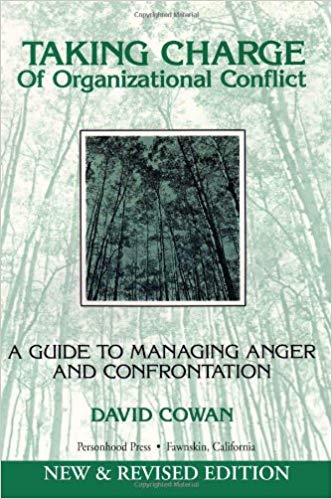
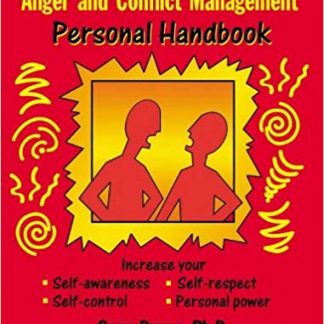
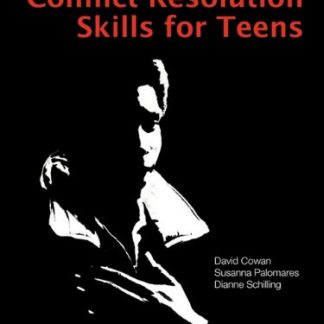
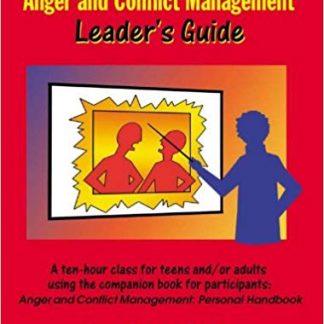
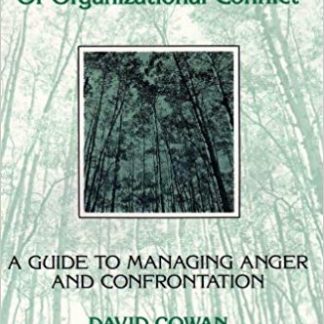
Reviews
There are no reviews yet.